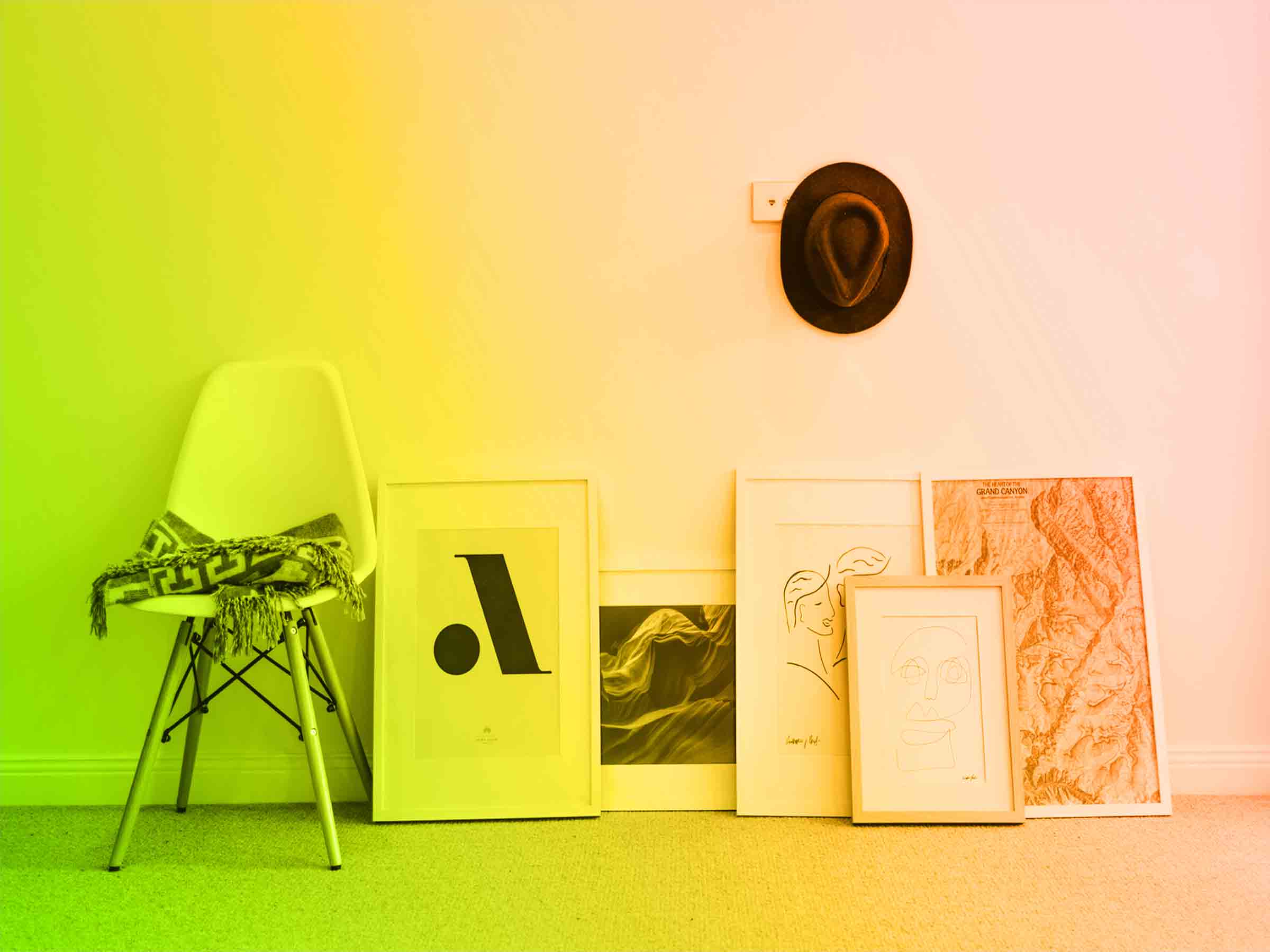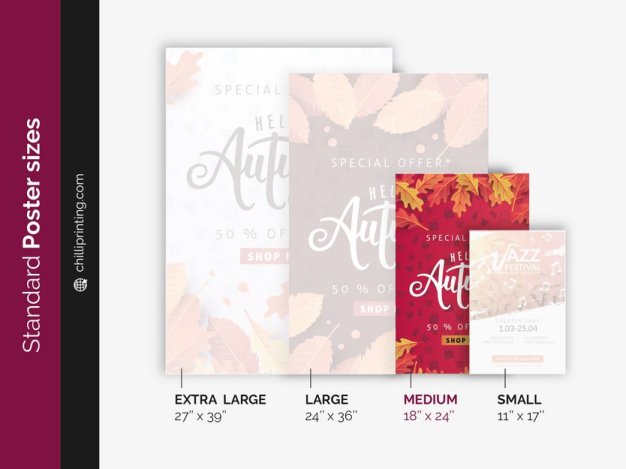
Posters are great. Whether for event advertising, product marketing, or simply for decoration, they can be captivating, beautiful and cost-effective. But choosing the right poster size is key. This will depend on where you intend to display your poster, and what is it advertising.
Whether you’re bulk printing or designing your own custom posters, it’s important to make sure you’re chosing the right poster size. Different printers will offer different dimensions, and sometimes it can seem confusing when you’re trying to format your design. But don’t worry, there are a few simple guidelines you can follow to ensure your poster ends up being the right size.
Here to help you design the perfect poster, ChilliPrinting brings you a guide to understanding common poster size.


Although it’s small for a poster, it’s still large enough to catch people’s eyes, and hold a good amount of information. Often referred to as ledger size or tabloid paper, this is the smallest standard poster size. It’s ideal for event advertisement without taking up too much space. These posters are commonly found on bulletin boards, lamp posts, and in shop windows. They’re perfect for public use, and informing passers-by about upcoming events. They are also commonly used as pin-up posters to decorate lockers and wardrobes. If you’re designing a small poster, try using a minimalist approach to text and imagery, as you’ll want to use space efficiently. Think big lettering, simple message. Bold colors and a large font size will help catch people’s attention.

This poster is a very versatile and widespread format. You might have heard it referred to as Architectural C size – it’s large enough to contain a little more information, and perhaps a more detailed image. That said, we would still recommend a minimalistic approach when it comes to designing posters in this size. You don’t have meters of graphic space to play with. These posters are large enough for advertising and promoting concerts, festivals or sporting events, and are often seen in doctor’s offices, in the street, and on bulletin boards.

24″ x 36″ is by far the most common standard poster size. When you think of a poster, you’re most likely imagining one in this dimension. Also called Architectural D Size, these posters are very popular and ubiquitous. They’re perfect for a variety of uses, ranging from

This is the size that is most commonly associated with movie posters. If you’re standing in a movie theatre, you’re probably looking at a poster of this dimension – what the film industry calls a One Sheet. These posters are also great for promoting concerts, festivals and music albums. They’re ideal for outdoor advertising, as they can be viewed effectively from a distance. Bear in mind that if you’re creating a poster for outside use, you’ll want to use a durable poster paper – one that’s waterproof and doesn’t crinkle up or tear apart when wet, or when glue is applied.
If you are designing your own poster, you can’t go wrong by using the standard dimensions we’ve outlined above. They are used by printing companies worldwide, and are tried and tested to be successful. That said, you needn’t be afraid to work with different dimensions, and customize your own posters. Posters can be cut into any dimension you like. Just get in contact with your printer and check that they are able to print your desired custom poster size. At ChilliPrinting we offer a range of intermediary sizes, such as: 13”x19” (Small-Medium), 19”x27” (Medium-Large), and 32”x48” (XXL), all of which are available as single and double-sided prints. Customizing is always an option, so when it comes to poster sizes, the world is your oyster.
Choosing the right paper to print your posters on is essential. Cheap paper looks exactly that, and will often suffer from premature wear and tear. That said, you don’t need to spend through the roof on fancy paper in order to produce durable, or good looking posters. Choosing the right paper is all about matching the paper to your needs.
The first thing to note is: always use acid-free paper for poster printing. This is the golden rule. You don’t want your poster to turn yellow over time, so you must ensure that you’re printing on paper that is acid-free. Beyond that, choosing the best paper for your poster will depend on a variety of factors, including:
If you’re printing in bulk, you may want to print on cheaper materials to save on costs. However, if you are only printing ten custom posters, for personal or limited use, you may opt for the luxury of high-quality paper. Before you place your order, ask whether you are looking to print your poster on expensive canvas or 100% cotton paper. The thickness, measured in Pounds (lbs), will determine the quality and longevity of your poster.
Posters can be printed on either shiny gloss paper, or matte paper. This really is a matter of personal preference. It depends on what you want to achieve with your design. Gloss will bring out bright colors, making them look sharp and crisp. It’s eye-catching and loud. Matte will create a serene palette, that is more faded and subtle. Some papers also have a specific tone. For example, you can print in cool tones (blue tone) or warm ones (red tone).
Where is your poster going to be displayed? And how long does it need to last for? Location and longevity are important factors to consider when choosing your print materials. Posters that will be displayed indoors, or in a glass case, will be protected from the elements, and therefore can afford to be printed on thinner paper. However, posters that will be displayed outdoors need to be tougher, thicker and more durable, with the highest possible lbs.
If you’re printing in bulk, we recommend using paper with a minimum thickness of 80 lbs. Text Stock. Anything less will cause your posters to look poor quality, or fall apart. If you have the budget, it’s best to use heavier papers. Somewhere between 100 and 120 lbs would be ideal. This will give your posters a more luxurious look and feel, whilst ensuring that they last longer.
Choosing the right poster size is easy. Displaying outside? Try an extra large poster, with a heavy Text Stock. Advertising a product or event? When in doubt, go large. This is the most popular and versatile size. It’s hard to go wrong with large. Promoting a local event? Small or medium will be the size for you. Whatever your desires or needs, simply follow our guidelines, and we’re sure you’ll end up with the perfect poster.
Now that you know how to pick the right poster dimension, head to our Online Printing Store and print your poster designs at the best quality and price with Chilliprinting.
You must be logged in to post a comment.